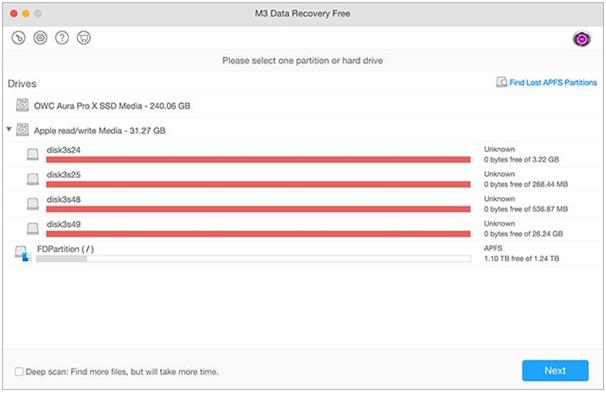
While MiniTool Data Recovery packs some terrific features, there are still some caveats to contend with. This function works, but isn’t integrated into the main application, which fans of Data Rescue 4 might find annoying. Launch the MiniTool Boot Media Builder application, select a CD, DVD, or USB flash drive for it to use, give it a few minutes and you now have a bootable MiniTool Data Recovery drive that you can option-boot into if need be. Like several of its competitors, MiniTool Data Recovery both ships with a bootable CD as well as offers a utility to create a boot volume from a CD, DVD, or USB flash drive. Helpful if you’re working with a large volume that needs to be sifted through. Like Data Rescue 4, MiniTool Data Recovery can save and work with previous scan states, allowing you to work with a partially completed scan at a later point in time. Activate either of these features and MiniTool Data Recovery will begin ferociously chugging away, locating everything it can find through the first scan of the volume, then allowing you to save whatever it can recover in categorized folders. The Undelete Recovery and Damaged Partition Recovery features work as you’d expect them to, especially after seeing these standard features on competing programs.

This and the Digital Media Recovery feature stand out and it was fun to take an old SD card that had been laying around for years, plug it into my MacBook Pro, run the feature and dig through hundreds of old pictures I’d long since forgotten about. I’ve never seen a feature quite like this before in a recovery program for the Mac and it was interesting to go through the past partitions on an old notebook hard drive and see what had been there before. Features like Lost Partition Recovery do a great job of scanning not just a drive’s current partition elements, but also dig up past partition elements that may have been lost or formatted over and there’s a good chance you’ll be able to recover at least some data in the process. Once you get down to it, MiniTool Data Recovery can perform some impressive feats, even if the path to get there doesn’t feel as refined as it could be and a few things make you scratch your head and wonder exactly what the rationale for the design was.
#Is m3 mac data recovery review windows#
This offers an unexpected new aspect, especially if you have a Boot Camp or old hard drive from a Windows or Linux machine that you’d like to haul old files from. Instead of centering itself as a Mac product, the program offers support for file architectures typically associated with Windows volumes: NTFS, FAT16, FAT32, etc.


The four functions are fairly self-explanatory, but MiniTool takes a different approach that has to be considered.
#Is m3 mac data recovery review password#
Launch the MiniTool Data Recovery program, enter your Mac’s admin password and you’re presented with four primary functions: Undelete Recovery, Damaged Partition Recovery, Lost Partition Recovery and Digital Media Recovery. From the lands to the north, Canadian developer MiniTool Solutions has issued forth Mac Data Recovery 3.0, a recovery utility that seeks to follow in the footsteps of established players like Prosoft’s Data Rescue line and 508 Software’s Disk Drill while adding a few new tricks in the process.


 0 kommentar(er)
0 kommentar(er)
